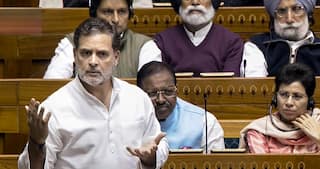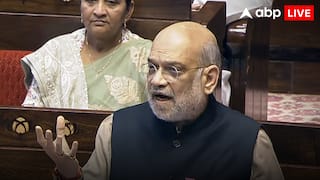9 Most Talked-About Business Buzzwords That Grab Eyeballs In 2022
Yearender 2022: The business domain witnessed a few buzz words that made headlines throughout the year

Yearender 2022: The business domain witnessed a few buzz words that made headlines throughout the year. From recession to shrikflation or moonligting, every words have impacted our minds and have earned a place in the dictionary. In the following are the nine key buzzwords that we have discussed about. With 2022 coming to a end soon, here’s a peek at some of the most talked-about business buzzwords of the year.
Shrinkflation
Shrinkflation, in economics, is the practice of cutting down the size or quantity of a product, while the rate of the item remains the same or slightly increases. The term, in some cases, may indicate lowering the quality of a product or its ingredients without hiking the product price. The term was first coined by British economist Pippa Malmgren in 2009. Shrinkflation is mostly common in the FMCG industry, especially in the food and beverages sector. In the case of rising inflation, manufacturers usually opt for shrinkflation. Instead of hiking the price of any product, companies reduce the size of the item keeping the price of the product untouched. According to the companies, shrinkflation helps them to bear the brunt of higher input costs. The firms adopt this method as it will not immediately affect the buyer and they hope the consumers will not be able to notice the reduction in quantity at first glance.
Stagflation
Stagflation is a combination of two words – stagnation and inflation. Stagflation occurs when an economy experiences high unemployment, little or no growth, and soaring inflation. However, all the three categories will not lead to stagflation all the time as experts see it as a peculiar economic condition. The term stagflation was first coined by Iain Macleod, a British politician, in 1965. Several economists once doubted stagflation was possible, as unemployment and inflation typically move in opposite directions. Analysts are of the view that price levels are usually driven by an economy’s level of demand, while unemployment generally declines when demand rises. Stagflation usually occurs when a country faces supply shocks. The Covid lockdowns, which disrupted the global economy, followed by the current war between Ukraine and Russia could put the last nail in the coffin. Experts have termed the supply disruption due to the ongoing geo-political crisis as the largest commodity shock the world had experienced since the 1970s.
Inflation
Inflation is undoubtedly one of the most referenced words in the year 2022. Inflation has plunged several countries into long periods of instability. In India, consumer price inflation cooled to a nine-month low of 6.40 per cent in November mainly due to a moderation in food prices. Inflation has stayed above the upper end of the Reserve Bank of India's 2-6 per cent tolerance band all year and this has triggered 225 basis points of interest rate rises to the repo rate so far, taking it to 6.25 per cent. If the inflation forecast is correct, the decline would take it to where it was just before Russia invaded Ukraine in February, which sent global food and commodity prices soaring.
Merge
The Merge, or specifically, the Ethereum Merge, was the most awaited crypto event of the year and it finally took place on September 15, as confirmed by Ethereum co-founder Vitalik Buterin on Twitter. After months of speculations and preparation, the Ethereum network switched over from a proof-of-work (PoW) model to a proof-of-stake (PoS) system. Among other things, this will bring a 99 per cent reduction in energy consumption on the Ethereum network, marking a valuable step forward towards a 'green' blockchain.
Recession
An economic slowdown is called recession, which is a significant, widespread, and prolonged downturn in economic activity. A common rule of thumb is that two consecutive quarters of negative gross domestic product (GDP) growth mean recession, although more complex formulas are also used. In India, the RBI has lowered economic growth projection to 6.8 per cent from earlier estimate of 7 per cent for current fiscal. The central bank sees inflation 6.7 per cent during FY23 with Q3 at 6.6 per cent and Q4 at 5.9 per cent as inflation remains high and broad based globally in the aftermath of the Russia-Ukraine war.
Moonlighting
Moonlighting refers to employees taking up side gigs to work on more than one job at a time. This trend is a common concept in the Indian job sector. Recently it is making headlines for wrong reasons after severe backlash from several IT firms. Companies have always opposed this practice, saying that employees doing multiple jobs can impact their productivity. An employee usually works for 8-9 hours in his primary job, while he takes another 4-5 hours for moonlighting.
Quiet quitting
For several workers, resignation may not be an option, so many youngsters are now resorting to 'Quiet Quitting'. The trend simply speaks about doing the bare minimum expected at work. Going by a Deloitte study, “Young people are increasingly seeking flexibility and purpose in their work, and balance and satisfaction in their lives." And many are rejecting the live-to-work lifestyle. They want to continue to work but are not allowing the job to control them. This concept basically means that workers perform only the duties prescribed in their job description and shrug off any responsibilities beyond that. Employees also reject working longer hours and stick to the timing necessary for their role.
CBDC
The Reserve Bank of India (RBI) introduced the Digital Rupee or CBDC (Central Bank Digital Currency) towards the end of 2022. Divided into two use cases — e₹-W (wholesale sector) and e₹-R (retail sector) — the CBDC carries the same value as its fiat counterpart. Although it exists on a blockchain, the value of e₹ doesn’t fluctuate like crypto coins. The central bank believes e₹ can cut the cost of logistics for fiat money printing and removes the intermediation of banks from online transactions.
IPO
Though 2022 saw a predominantly lacklustre performance mostly due to volatility triggered by geopolitical tensions which soured the sentiments for the primary markets, some of the IPOs generated interest among investors. Of them the LIC IPO was one of them. Apart from LIC, Ruchi Soya, Delhivery, Campus Activewear, Adani Wilmar, and some other made headlines. In this year fund mobilisation through IPOs halved to nearly Rs 57,000 crore. After a blockbuster performance in 2021, the primary market mostly portrayed a sluggish and sombre show.






































